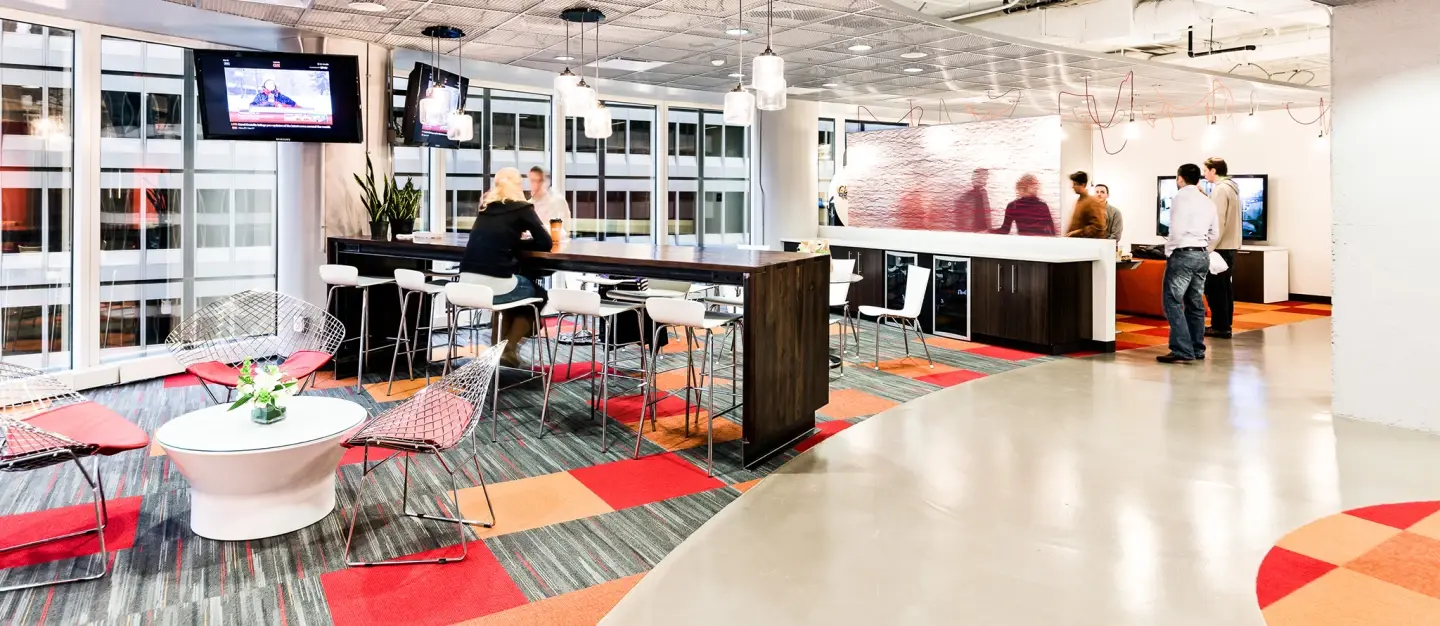Maintaining work-life boundaries is more important than ever. Here’s how these 7 professionals do it.


We all know someone who has taken a total of five paid time off days in the last year. While dedication certainly pays off, burnout is real — especially as many tech professionals adjust to working from home for the first time.
At the following companies, managers help their direct reports reduce stress by encouraging them to actually use vacation days, even if it’s to spend an entire day sitting on the couch.
“No one will respect the boundaries that you set until you do.” Devin Hauser, senior vice president of delivery at tms (formerly The Marketing Store), said.
To make the days spent working increasingly productive and enjoyable, leadership at the customer engagement agency and across Chicago have carved out time for virtual team bonding and provided stipends for employees to make their home offices feel that much homier. And it’s paid off.
—
An inability to travel doesn’t mean that you can’t — or shouldn’t — take paid time off. This is a lesson that tms’s (formerly The Marketing Store’s) Devin Hauser works to instill in her team. The senior vice president of delivery said she encourages others to take vacation time by taking it herself.
Hauser has also found the company’s new, bi-monthly stipend helpful, explaining that it acknowledges the expenses involved in creating a productive home office. Employees are able to use this stipend however best suits their needs, whether it’s purchasing a new desk chair or covering the cost of Wi-Fi each month.
What examples do you set as a leader to ensure remote employees feel empowered to create and uphold healthy work-life boundaries?
Admittedly, some of our people feel they need to be available for work all the time. Simultaneously, they feel they must be available for their children or family members at any hour. These conflicting priorities sometimes create feelings of obligation and can make work-life balance tricky. Boundaries are the key.
No one will respect the boundaries that you set until you do. If you need a free hour at a specific time, my stance is always to let your team know and then take that time. As soon as you set that boundary and adhere to it, your teammates will also be respectful. I’m careful to model this same behavior to make sure I’ve set a clear precedent.
I also encourage folks on my team to schedule blocks on their calendars to eat lunch, take a walk or simply decompress for a few.
Say a remote employee came to you and said they were feeling burned out or overworked. How do you address the situation?
When someone comes to me expressing concerns around burnout, I ask them when they last took a day off. If it’s been a while (and sometimes even if it hasn’t), I encourage them to schedule time off as soon as they can. It’s so tempting to not take time when you can’t travel. But sometimes the best thing for productivity, focus and excellence at the digital office is to turn your brain off and get away from your screen for a bit.
As a leader, I believe taking days off and being disconnected is an important part of setting a good example. I make sure my team knows that it’s OK to take the day away — even if they’re just jet-setting to the couch for a Netflix binge — by doing that myself.
What are some specific perks or benefits your company offers remote workers to ensure they have the resources they need to be successful working remotely?
This year, to offset employees spending increasingly more time online amidst the pandemic, we added more companywide days off to better ward off potential burnout. May through September, we also maintain “sunshine hours.” We encourage employees to take four hours off each week to enjoy the warm weather or to schedule some down time on whatever day works best for them.
We’ve also been vocal about encouraging our teams to work from anywhere. Grounded in trusting our people to act in the best interests of our business, this flexible work policy gives employees the option to safely social distance and visit family for longer periods of time while still delivering on their usual commitments.
Keeping employees happy, healthy and engaged while working remotely has also led us to take on new wellness initiatives. With a growing sense of isolation, anxiety and stress, we knew we needed to step up our mental health offerings. So we debuted mindfulness and meditation programming at no cost to our team.
Trending



